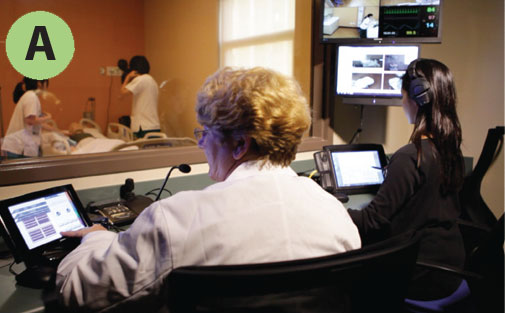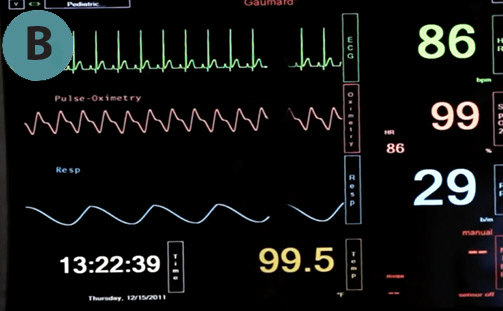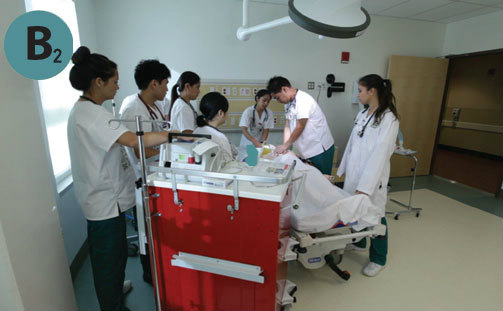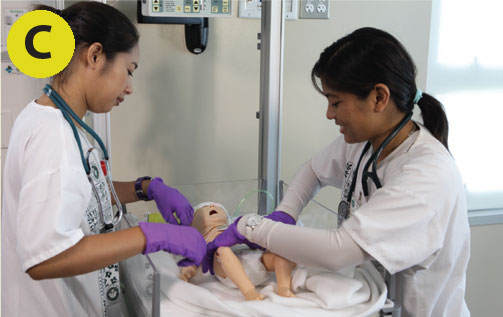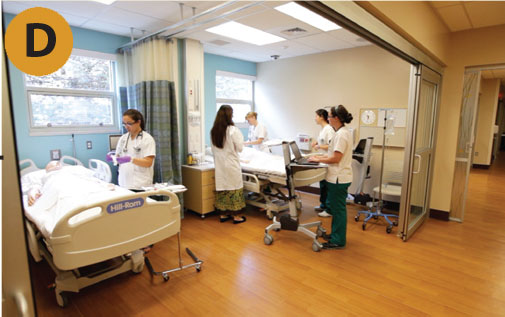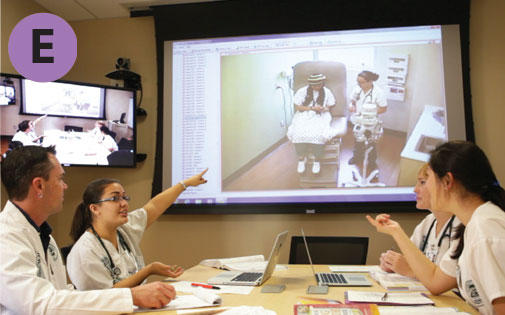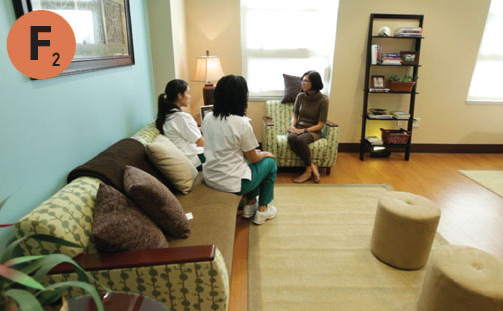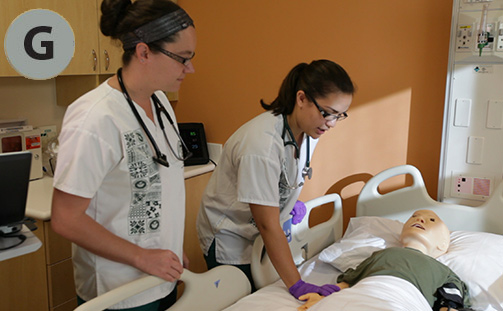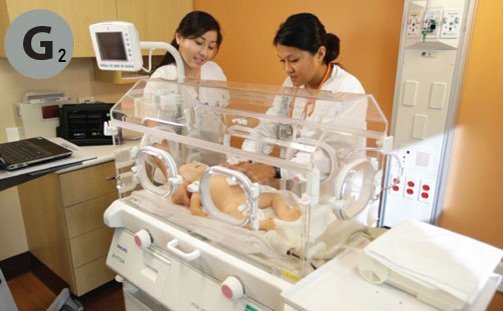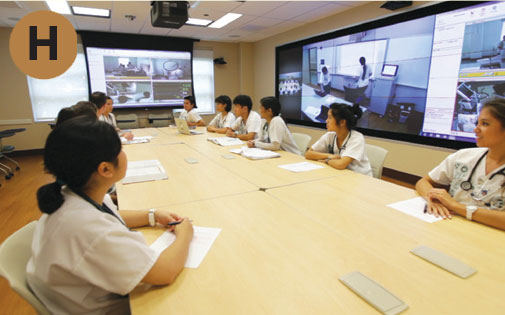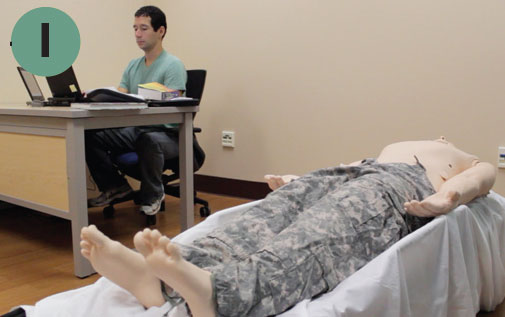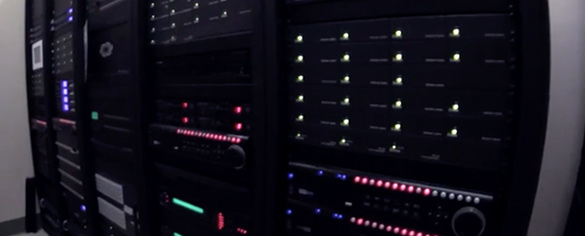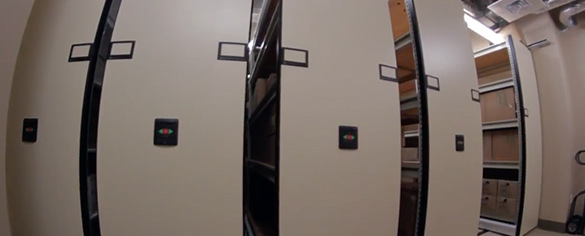Welcome to the University of Hawaii
Translational Health Science Simulation Center!
You are about to experience how professionals become prepared to manage situations where mere seconds can mean the difference between life or death. As you explore the facilities, you’ll discover a wide array of simulation exercises that provide real-world, hands-on practice. Innovative use of state-of-the-art technology translates to the delivery of safe, high-quality health care.
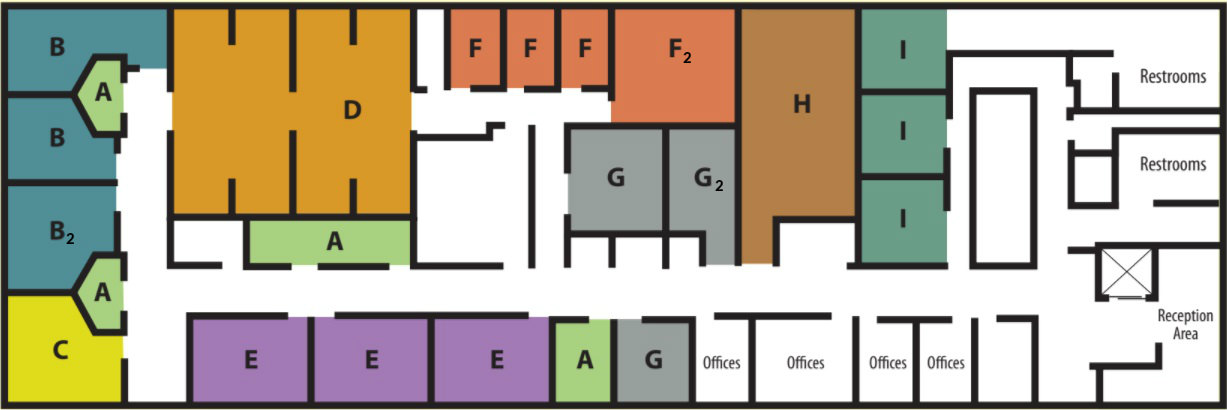
Watch the Entire Virtual Tour Video
Description of Rooms
Room A – Control Room Simulator
Control Room Simulator and audiovisual control occurs behind one-way mirrored windows or through computer monitors. Data from the simulation sessions can be captured and analyzed to improve learning and patient outcomes.
Room B – Intensive Care Unit
Inside this high-fidelity area, you’ll feel as if you are in a private hospital room or a highly technical ICU. Students practice and refine their critical thinking skills on manikins without putting real patients at risk. This specialty wing includes an isolation anteroom to practice isolation protocols. Simulation sessions conducted in these rooms provide participants with opportunities to practice caring for acutely ill patients utilizing actual equipment found in ICUs. Students gain confidence and competence through self-reflection on their actions in this safe environment.
Room B2 – Trauma / Operating Room
Three specialty rooms house advanced adult simulators. The trauma room is easily converted to an operating room or interprofessional team training facility. The ICUs are designed to replicate private hospital rooms or ICUs for participants to practice and refine their critical thinking skills.
Room C – Birthing Suite
In the Birthing Suite, you will experience the complete birthing process from labor coaching through delivery and postnatal care. Through hands-on practice and connection with peer learning groups, these simulations draw out not only the technical skills required for safe, quality care, but also the compassion needed to support mother and child during this emotionally-charged process. Students are inspired and empowered to gain mastery in the delivery of effective quality care.
Room D – Hospital Bay
Semi-private hospital rooms provide a realistic learning environment to practice skills and procedures. The ability to safely transfer patients to other care locations in the facility provides participants with the opportunity to practice the patient handoffs that are required with changes in care needs.
Room E – Debriefing Rooms
Debriefing is the most important aspect of simulation learning. Room design and multimedia features create a safe environment for learners to review and reflect on their actions in order to improve performance in real situations.
Room F – Clinic Rooms
From the comprehensive hospital environment, you can take just a few steps into an authentic clinic setting. Here, video teleconferencing and tele-health capabilities provide participants with opportunities to effectively manage the continuity of care after hospital discharge to outpatient settings. By repeating and practicing skills in different environments, students become well-rounded, competent practitioners.
Room F2 – Apartment
Participants have the opportunity to effectively manage the continuity of care after hospital discharge in the home, community or clinic through our video teleconferencing and telehealth capabilities.
Room G – Pediatric Intensive Care Unit (PICU)
Pediatric specialty units provide hands-on pediatric and newborn learning experiences. These rooms are equipped with age appropriate simulators and equipment utilized in neonatal and pediatric units in Hawai’i hospitals.
Room G2 – Neonatal Intensive Care Unit (NICU)
Neonatal specialty units provide hands-on newborn learning experiences. Here you’ll discover rooms that are equipped with age appropriate simulators and equipment utilized in neonatal and pediatric facilities. The condition of ill neonates can rapidly deteriorate creating an emergency situation which requires focused assessments, quick clinical decisions and team collaboration. These high-risk, low-frequency experiences are rarely available to students in clinical practice sites. The Simulation Center offers a safe environment in which inter-professional teams can work together to gain experience and confidence on their journey to become prepared practitioners and save infant lives.
Room H – Multimedia Room
State-of-the-art multimedia features, such as our video-wall and video teleconferencing capabilities enable THSSC to harness the power of technology to enrich the learning experience, encourage collaboration and extend our global outreach.
Room I – Biobehavioral Research
Dedicated research rooms provide facilities to conduct translational health science research. Translational research involves applying knowledge gained in basic science research to patients and communities.
The Center also has server rooms and storage rooms.


